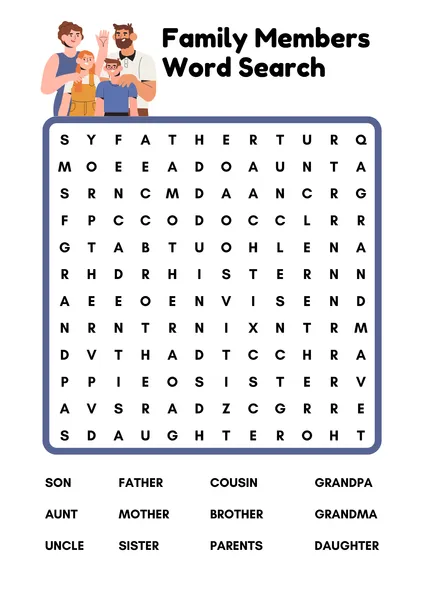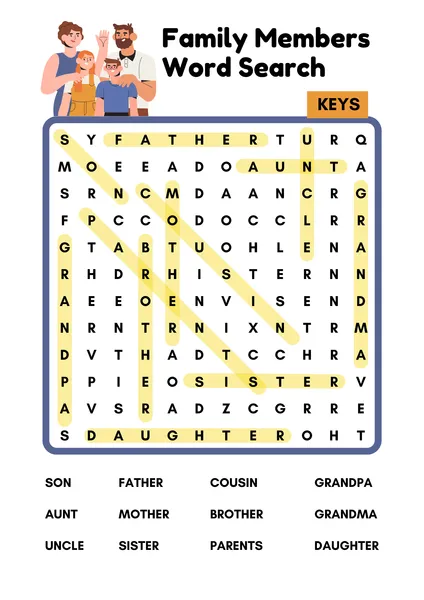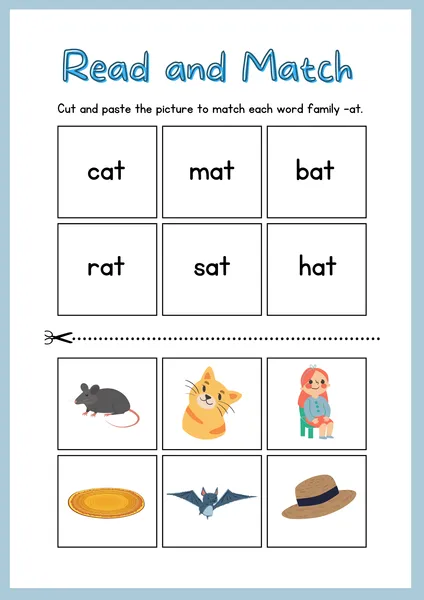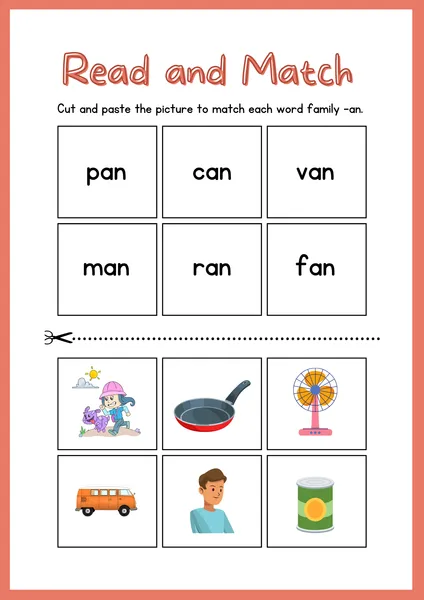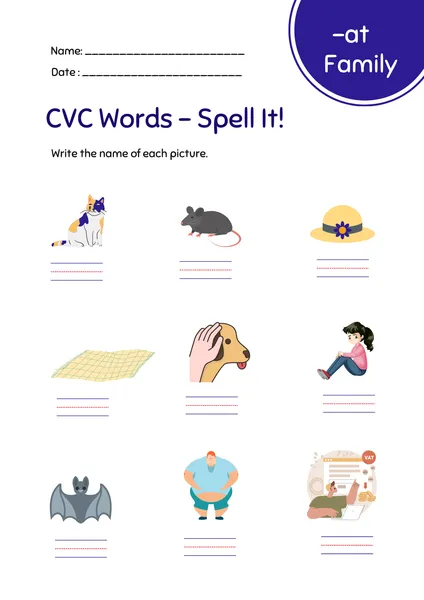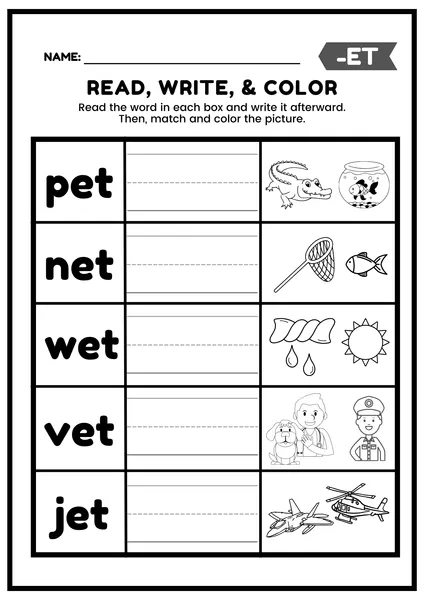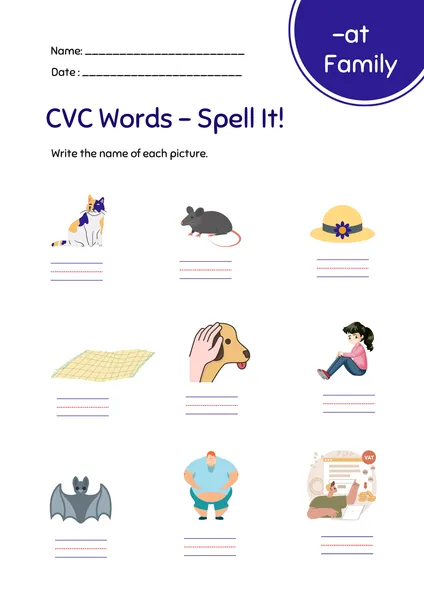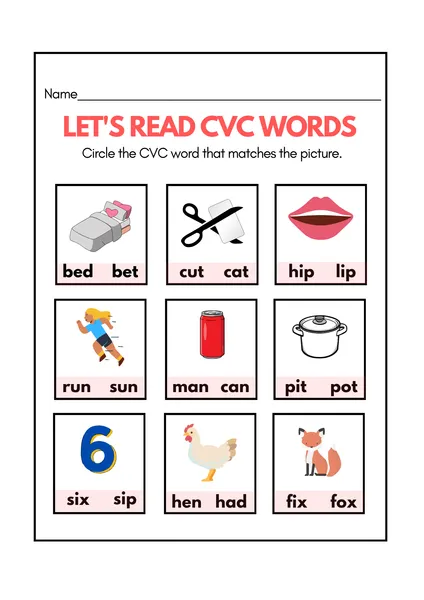CVC words mean consonant-vowel-consonant words and are the components of the path of early reading. These words include cat, dog and sun, which are easy to decode and teach little learners due to the phonetic patterns of the three-letter words. Recognising CVC words is crucial for reading and spelling abilities, and CVC word family worksheets are perfect for obtaining them.
In the following article, the author focuses on the key role of CVC words in literacy learning and offers a guide to CVC word family worksheet activity. We will discuss typical CVC word families, recommend interesting and enjoyable activities, and provide the links to the free printable CVC word family worksheets so that tutors and parents can help their children develop their literacy as quickly and happily as possible.
The Importance of CVC Words in Literacy Development
Teaching and learning words with concurrent vowels and consonants are essential because of the simplicity of the structure. Here’s how they contribute to building a strong foundation in reading and spelling:
- Phonemic Awareness: Specifically, CVC words enable the children to build up phonemic awareness or the capacity to pronounce and manipulate the phonemes in words they hear.
- Phonics Skills: Children learn that the letter c sounds like /c/, the letter sounds like /a/, and the letter t sounds like/t/.
- Decoding Skills: CVC words are suitable for teaching decoding, that is, manipulating individual words. When the sounds of letters in ‘CVC’ words are phonetically combined, children and readers can easily read a word and introduce new words to their vocabulary.
- Spelling Skills: CVC words help teach spelling because they enhance students’ understanding of the relations between sounds and letters. Students can also map spoken words to the correct letters to help them spell better.
- Reading Fluency: When kids can read CVC words, their fluency increases. It is rapid and efficient, and therefore, comprehension can be enhanced.
- Confidence Building: Such children acquire new skills in reading and spelling and get confident when tackling CVC words. This rewards them for solving more complex words and materials and motivates them to move on.
Common CVC Word Families
CVC word families are groups of words that follow the same vowel and final consonant, for instance, the -at family of words (cat, bat, hat) and the -in family of words (pin, fin, win). Here’s a list of ordinary CVC word families:
- -ab: cab, dab, gab, lab, nab, tab
- -an: may, man, pan, ran, tan, van
- -ap: cap, gap, lap, map, nap, rap, sap, tap, yap
- -at: There are: bat, cat, fat, hat, mat, pat, rat, sat, vat.
- -ed: bed, fed, led, red, Ted, wed
- -e.g., beg, keg, leg, peg
- -en: den, hen, men, pen, ten
- -et: bet, get, jet, let, met, net, pet, set, wet, vet
- -id: bid, did, hid, kid, lid, rid
- -IG: big, dig, fig, jig, pig, rig, wig
- -in: be some, big in, find in, give in, pine, sink in, tin, win
- -ip: ass, sass, class, grass, moss, pass, toss, Travel
- -it: and the new ones added are: bit, fit, hit, kit, lit, mit, pit, sit, wit
- -ob: However, cob, fob, gob, job, lob, mob, rob and sob are devious tricks of avoiding the pronoun ‘God’.
- -od: cod, god, nod, pod, rod, sod
- -og: bifog, big, bog, cog, dog, fog, hog, jog, log
- -op: cop, hop, mop, pop, pop, top
- -ot: caught, fought, thought, ought, bought, brought, thought, sought, sought, fought
- -ub: club, cub, cub, cut, drub, dub, hub, nud, nub, rub, sub, tub
- -ud: bud, cud, dud, mud, pud
- -ug: bug dug hug jug lug mug pug rug tug
- -un: bup, dup, duo, gul, guv, jun, nup, pug, pum, shun
- -up: cup, pup, sup
Fun Ideas for a CVC Word Family Worksheet
CVC word family worksheets provide the child with many different tasks to allow them to practise and remember the above-mentioned CVC words. Here are some practical ways to use these worksheets:
Reading
Ask the children to read the CVC words in the worksheet as loud as possible while ensuring the sounds overlap.
Writing
Let the child pretend to write CVC words to append their learning experience. They may trace the words from the worksheet, write them from dictation, or compose their sentences out of those words.
Matching
Too, use worksheets with matching activities in which children can try to match pictures to the respective CVC words or match words in the specified word family.
Sorting
In an assembly-learning framework, it’s helpful to include sorting tasks where the children group words by CVC families or initial/final CVCs.
Fill-in-the-blanks
Using Word banks, prepare worksheets with sentences containing missing CVC words and ask children to complete such a worksheet by filling in the missing parts using their context clues.
Word Building
Take clay or a platform and make word families on certain words, such as CVC. The letters can be moved around to create different words, and the child can find out how the pattern within the family works.
Games
Use word practice of CVC words as a game. For the CVC practice, the students can engage in “CVC Bingo” or “CVC Memory’ using picture or word cards from the worksheets.
Creative Writing
Lead children to write simple stories or poems using CVC words or to describe an object using such words. This activity challenges creative insight, yet it helps enhance their Figurative Language Comprehension and Vocabulary skills
Free Printable CVC Word Family Worksheets
Here are some free printable CVC word family worksheets:
Free-Printable-CVC-Word-Family-Worksheets
Tips for Using CVC Word Family Worksheets Effectively
To maximise the benefits of CVC word family worksheets, consider the following tips:
Start with simple word families:
Therefore, start with simple word families that contain a high-frequency vowel; for instance, -at or -in graduagradually buildlexity to more advanced options for the child.
Make it multisensory:
Ensure that the class involves at least some element of material practice to be helpful to all hand-style learners. Use letter tiles to write CVC words and engage children with playdough or sand to promote better writing skills.
Keep it engaging:
Learning should be made fun of and involve as many activities as possible. Instead of boring writing and reading worksheets, try games, songs and colourful pieces of paper.
Provide positive reinforcement:
Reinforce non-social slipped nurturing, that is, positively comment on the child’s attempts to solve the problem even if they are incorrect. Keep your eyes on the development of your children and regulate their achievements.
Differentiate instruction:
Make the planned activities and worksheets fit the child’s potential and requirements. Give more attention to students who are slow in grasping the lessons and, simultaneously, give a more challenging task to those with fast and grasping ability.
Integrate with other literacy activities:
Integrate CVC word family worksheets with other emergent literacy practices in the classroom, such as reading aloud, shared reading, and independent reading.
Conclusion
The use of CVC word family worksheets helps educate young kids on literacy.
Through Number 1, educators and parents can guide children in different activities to help them with phonemic awareness, phonics, decoding and spelling skills.
The free printable worksheets given in this article are easy to access to help children enjoy the process of learning CVC words and become confident and booming readers and writers.
